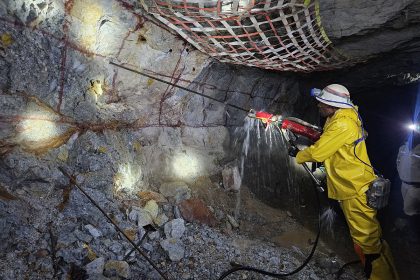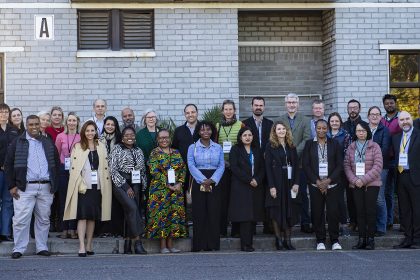With a strong commitment to low-cost mining, robust shareholder returns, resilience, and care for its local environment and communities, Bauba Resources (Pty) Ltd emerges as a mining company with a difference. Jonathan Knowlden, Managing Director, discusses the company’s recent activities against the backdrop of a continuously fluctuating South African socioeconomic landscape.
- TELLING A NEW STORY ABOUT MINING
- A BRIEF HISTORY
- DEVELOPING KOOKFONTEIN
- LEVERAGING SUCCESS
- BAUBA’S 10-YEAR VISION
- TELLING A NEW STORY
- SUSTAINABLE AND INCORRUPTIBLE
- CULTIVATING MEANINGFUL RELATIONSHIPS AND INVESTING IN COMMUNITIES
- INVESTING IN COMMUNITIES
- LOOKING TO THE FUTURE
- BAUBA RESOURCES (PTY) LTD PARTNERS
TELLING A NEW STORY ABOUT MINING
Responsible for more than 70 percent of the world’s chrome reserves, South Africa (SA) has historically been recognised as a key player in the global mining industry.
Located in the Bushveld Igneous Complex (Bushveld Complex), which is renowned for its abundance of chrome ore, Bauba Resources (Pty) Ltd (Bauba) is a diversified mining and exploration company ideally positioned to prosper as a burgeoning producer of the sought-after mineral.
This abundant resource is known for its involvement in the production of stainless steel, accounting for a large percentage of the country’s GDP as a key export. However, despite the chrome industry’s crucial contribution to SA’s economy, the journey from mine to market has not been without its challenges.
Amongst others, some of these challenges include rival community groups, sometimes violent and activist movements that have caused turbulence for the company’s operations, alongside delayed licensing that resulted in postponed production.
Meanwhile, a dysfunctional supply chain and electricity supply issues, such as loadshedding and planned power outages caused by the ongoing energy crisis, have caused further challenges for both Bauba and the wider industry.
Despite the challenges, the company believes there are abundant opportunities in the region and remains optimistic about the future.
“Bauba is primarily focused within SA. As such, we have a strong understanding of the local landscape – it’s a case of sticking to our niche and what we know,” introduces Jonathan Knowlden, Managing Director.
Whilst the company is a junior miner, perhaps without the clout or resources of bigger, more established mining companies in the region such as Samancor and Glencore, Bauba is well-placed to succeed with Knowlden at the helm.
“In my view, SA still has secure tenure, political stability, and limited unknowns,” he reflects.
Optimism is returning to the region with the new Government of National Unity (GNU), which has made progress by negotiating a break in loadshedding and reduced pressures from business forums and construction mafias threatening potential extortion.
“Prior to last year’s elections, I was concerned that the construction mafia model was expanding and diversifying beyond the construction industry and into mining. This has taken a step backwards and I have not seen this materialise,” Knowlden comments.
All this perceived pessimism has so far deterred external investors, creating opportunities for Bauba to thrive due to its glass-half-full mentality and ability to navigate the continuously evolving landscape.
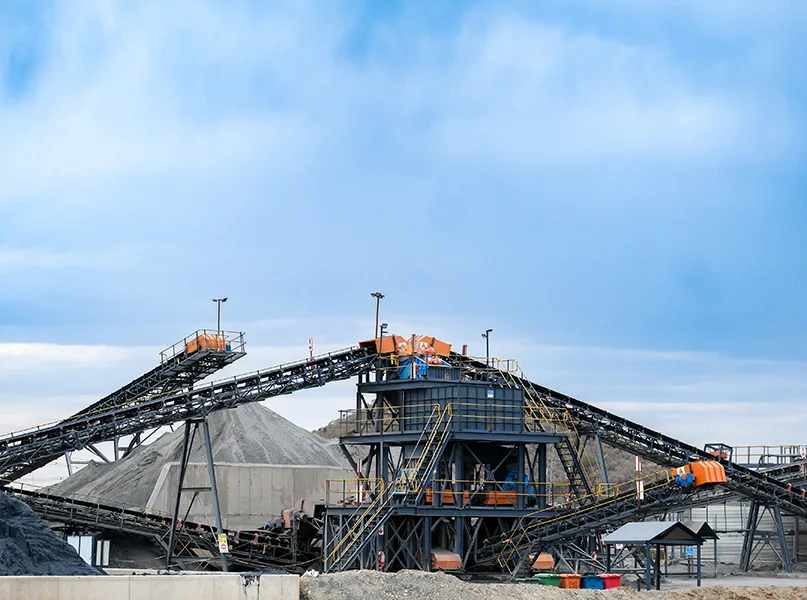
A BRIEF HISTORY
Incorporated in 1986, and listed on the Johannesburg Stock Exchange (JSE) in September 2010, Bauba began as a platinum exploration company known as Bauba Platinum Limited.
The company initially benefitted from the 2008 platinum boom in SA, driven by rising demand for the material from the automotive industry amongst other factors.
“Together with the Bapedi Nation, Bauba Platinum Limited was granted significant deep-level platinum exploration rights in the Bushveld Complex which, at the time, carried significant value,” Knowlden reveals.
However, the market crashed later that year, which meant deep level platinum mining was no longer as attractive a prospect to investors. To this day, the market has not recovered to anywhere near the levels of 2008.
Meanwhile, sentiment towards the wider SA investment climate continued to sour. With the development of Bauba Platinum Limited’s platinum project stalling as value continued to diminish, the company had no choice but to seek an alternative cash-generating business.
As many of the organisation’s board and shareholders at the time were experienced chrome miners, Bauba Platinum Limited decided to pivot into mining chrome ore. In terms of geology, the Bushveld Complex’s chrome resources were right beside its platinum group metal (PGM) resources, which made for a straightforward transition.
In 2015, the company finalised a transaction acquiring the Moeijelijk Chrome Mine (Moeijelijk), consolidating its transition into the sector. With its high-grade deposit and limited life of mine, Moeijelijk presented the perfect catalyst for chrome exploration activities.
“We wanted to build on the success of Moeijelijk and have used it as a springboard to hunt for further opencast chrome opportunities,” he informs us.
In 2019, Bauba Platinum Limited officially changed its name to Bauba Resources Limited in keeping with its new agenda.
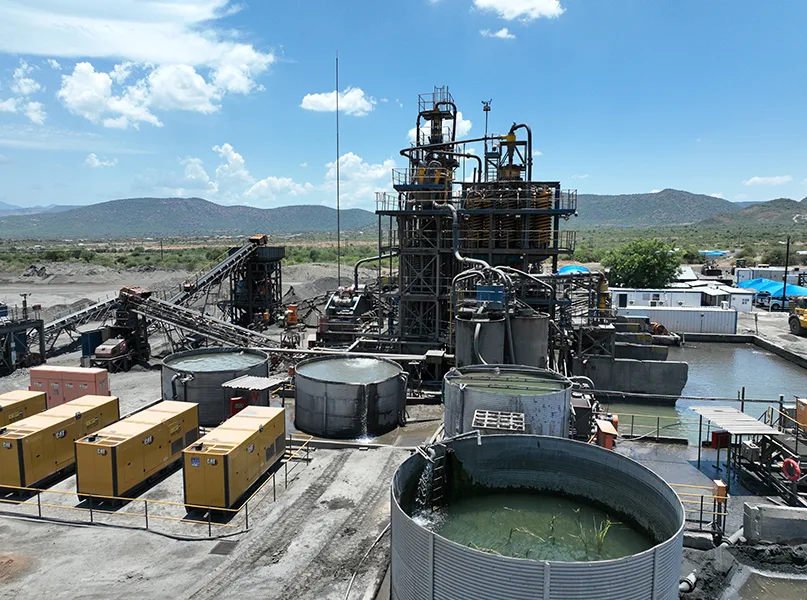
DEVELOPING KOOKFONTEIN
Building on its initial success in chrome mining, Bauba’s operations have since expanded exponentially. Today, it has established and operates two mines, Moeijelijk and the Kookfontein Chrome Project (Kookfontein), with a third, the Naboom Chrome Project (Naboom), currently underway.
Kookfontein is a large opencast primary chrome ore mine that has been in production since October 2021. Today, it predominantly mines Middle Group (MG) chrome ore seams that contain significant values of chrome and PGMs. Located near Rustenburg in the North West province, Kookfontein is a shallow resource with a low strip rate that translates into a low mining cost.
“Whilst awaiting licensing for the MG chromitite reefs, which are primarily mined for chrome but also yield PGMs as a by-product, we initiated limited opencast extraction of the Upper Group 2 (UG2) chromite reef at Kookfontein. The UG2 is a chromitite reef extensively mined in the Bushveld Complex, known for its high PGM concentrations, with chrome recovered as a by-product. This allowed us to capitalise on strong PGM prices at the time whilst making use of the available chrome production.” Knowlden explains.
Unlike UG2 ore processing, chrome is the main commodity in MG and Lower Group (LG) chromitite reefs and PGMs are secondary. In practical terms, UG2 PGM mining drives the economics, and chrome recovery is a beneficial by-product, helping offset costs.
The MG chrome seams licences were subsequently granted in April 2023, with mining of the seams commencing in mid-2023.
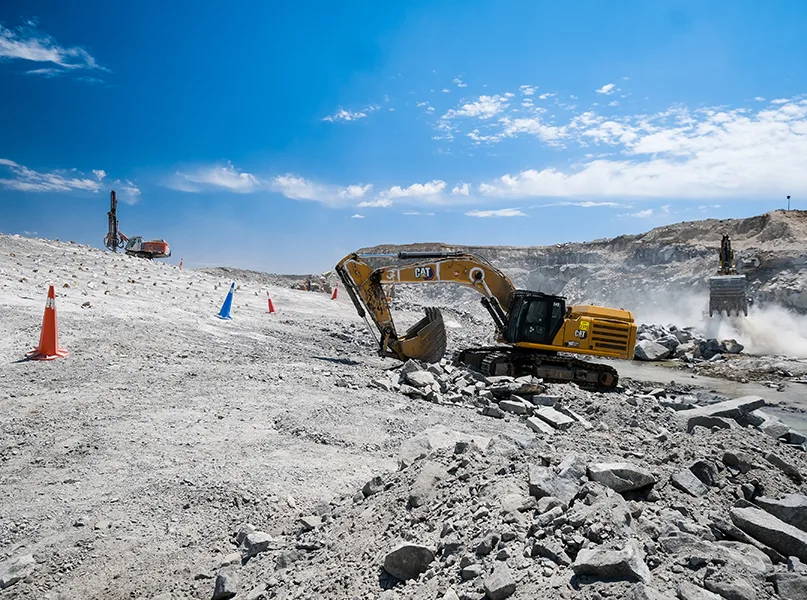
A year later, Kookfontein’s mineral resource measured 35.3 million tonnes (mt) at a chromium oxide (Cr2O3) grade of 29.32 percent, and 1.39 grams per tonne (g/t) of platinum, palladium, rhodium, and gold (4E PGM).
Today, with an operational 80 kilotonnes per month (ktpm) chrome spiral wash plant, complete with an associated crushing circuit and tailings storage facility (TSF) producing metallurgical chrome concentrate, Kookfontein primarily exports chrome to China to be used in stainless steel production.
In addition, the construction of a PGM flotation plant is currently underway, with planned commissioning to commence in Q2 2025. The plant has a throughput design of 30 ktpm with an expected future production of 1,500 ounces (oz) of 4E PGM per month.
“These PGMs will be produced from the credits in our tailings, only carrying an additional processing cost and will, therefore, add significant value to our operation,” he insights.
So far, Bauba has invested significant upfront capital of around ZAR820 million into Kookfontein, which includes funding the TSF, PGM flotation plant, chrome plant, opening of the pit, and other infrastructure. This operation will generate benefits for the remaining life of mine, which is currently approximated to be Q1 2035.
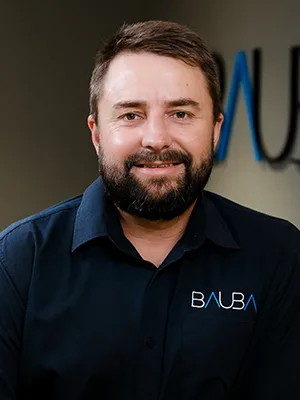
LEVERAGING SUCCESS
Initially established in 2015 as an opencast mine, followed by the development of an underground operation that commenced in 2018, Moeijelijk is located south of Polokwane in the Limpopo province on the northeastern limb of the Bushveld Complex.
Delivering chrome concentrate globally from its wash plant, Moeijelijk’s focus is on producing speciality grade concentrates such as foundry sand, chemical grade concentrates of more than 46 percent Cr2O3, and metallurgical grade concentrates of more than 44 percent Cr2O3 – each of which attract pricing premiums when compared to traditional MG and UG2 metallurgical concentrates.
Originally commencing as a conventional stoping mine with mechanised development, underground mining at Moeijelijk has recently transitioned to a fully mechanised bord and pillar mining method. This facilitates the mining of full Lower Grade 6 (LG6) and LG6A chromite layers, with ore being transported to the surface via an underground conveyor system.
A third future mine, Naboom, was recently acquired from Minmetals for a purchase price of ZAR100 million. Located 55 kilometres (km) south of Polokwane, Naboom has significant opencast resources with high grades of 31.1mt at a Cr2O3 grade of 35.63 percent and 1.99g/t 4E PGMs. Thick MG0 to MG4 seams are also present at this site, and the planned opencast pit is approximately three km in length and 200m in width.
“This project has a much higher grade of ore than Kookfontein but lower planned opencast tonnages. Following the success of Kookfontein, we are excited about the future prospects of this new venture,” Knowlden excites.
Whilst there is an underground resource present at Naboom, this is not something the company currently plans to develop.
“We have also just been awarded a water use license, which was previously preventing mining from commencing. As a result, we are now planning our site establishment, which we are excited about,” he adds.
Overall, including mining contractors, Bauba’s headcount for its Kookfontein, Moeijelijk, and head office sites amounts to around 1,900 – a number that is only set to increase as Naboom progresses, positively impacting local job creation.
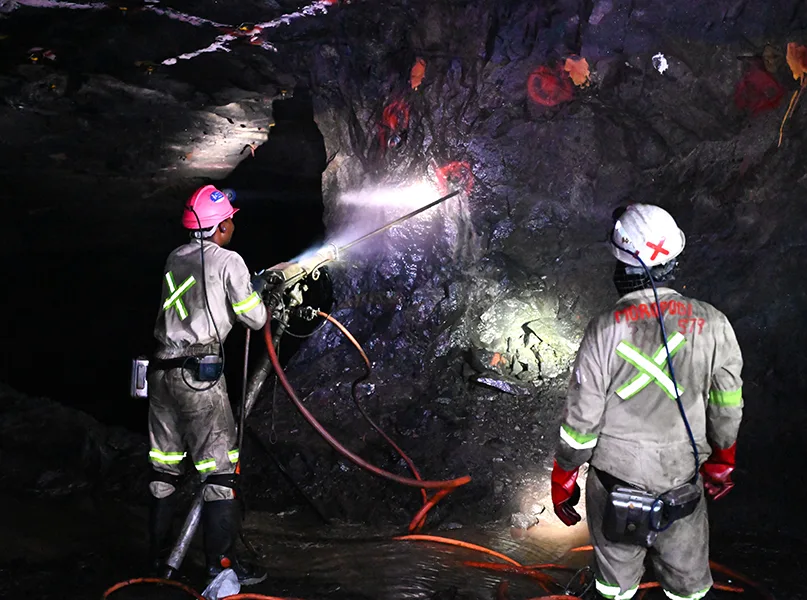
BAUBA’S 10-YEAR VISION
With the success of its business, Bauba has achieved an ambitious 10-year target set in 2018 to have three primary chrome operations focusing on co-product revenue generated from both chrome and PGMs.
“Each of these projects needed to be capital-light and developed in phases with a short payback to manage our limited capital,” Knowlden discloses.
At the time, SA’s monopoly on global chrome ore had seen it supply over 80 percent of Chinese imports, the world’s most dominant consumer of the material, which was an attractive prospect for Bauba.
As an industry that was invulnerable to international competition, chrome, therefore, presented natural, long-term economic security for the company against ongoing inefficiencies in the region’s supply chain and from the Electricity Supply Commission (Eskom).
“We have also targeted opencast primary chrome ore resources as our niche, as this model doesn’t fit the investment criteria of the bigger miners,” he adds.
When Bauba initially set out to achieve its 10-year vision, it was owned by shareholders with limited funding.
Thus, to grow the business beyond Moeijelijk, which it had acquired in 2015, the company recognised that strategic shareholders with capacity to provide the requisite support were required.
Pelagic Resources (Pelagic) was the first strategic shareholder, followed by leading SA infrastructure development and construction materials supply group, Raubex Group Limited (Raubex), which emerged as the ideal candidate.
Listed on the JSE, Raubex has become a strategic shareholder for Bauba since the acquisition was completed in 2022.
“Without Raubex and Pelagic we wouldn’t have made such solid progress towards our 10-year vision,” Knowlden reflects.
The company’s next steps towards achieving these targets are to complete the PGM plant at Kookfontein before developing Naboom in a similar way, with plans to implement a chrome spiral wash plant, PGM flotation plant, and TSF.
“We will leverage the close proximity of our Moeijelijk and Naboom operations by processing Moeijelijk’s rich tailings at the Naboom facility,” he details.
Today, Bauba’s combined mineral resources across its assets stands at 71mt of chrome with a Cr2O3 grade of 32.86 percent and 1.67g/t 4E PGM – a massive leap from the 6mt of Moeijelijk LG6 at 42 percent Cr2O3 and no recognised PGM resources in 2018.
“We still think there are a lot more opportunities, but we must first bed down what we have before acquiring any further projects,” Knowlden notes.
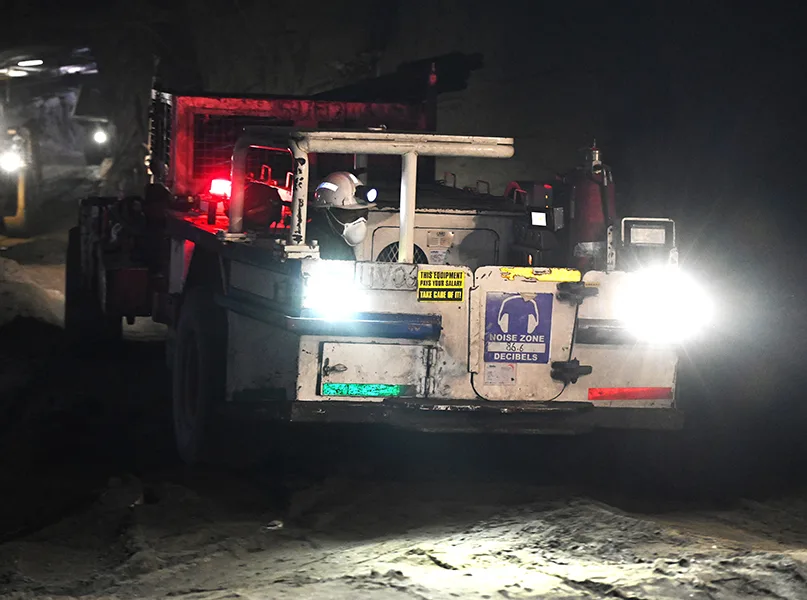
TELLING A NEW STORY
At the heart of Bauba’s operations lies a profound commitment to the communities it serves. Indeed, the company strives to do things differently through a more entrepreneurial, harmonious, and inclusive approach, seeking to establish an empowering and fulfilling work environment for its people.
“Our approach goes beyond mere compliance, and this is demonstrated across our projects where we ensure that the local community has meaningful participation,” Knowlden tells us.
At Kookfontein, for example, the Royal Bafokeng Nation (RBN), a Setswana-speaking traditional community and quasi-municipality, is a 26 percent shareholder. Meanwhile, Moeijelijk is 26 percent owned by the Bapedi Nation, and at Naboom, the Mphahlele Community Development Trust is an 18 percent shareholder.
“Our approach is very different from having one or two key broad-based black economic empowerment (B-BBEE) industrialist shareholders at holding company level, and lower participation at the operating level,” he prides.
Bauba recognises that local procurement and employee development are not just checkbox exercises. In this way, when commencing a project, the company identifies all possible community spending that can be done locally and pushes for this where feasible.
“For instance, at Kookfontein, approximately 50 percent of our spend is local, whilst on the personnel side, about 75 percent of our job roles are filled by members of the local community.”
From an agility standpoint, when Bauba acquired Kookfontein in 2021, it was a greenfield project with limited explored resources and low grades. Since then, the company has extensively drilled the mine, growing the resource from 10.5mt at 26.1 percent Cr2O3 and 1.17g/t 4E PGM to 35.3mt and 29.3 percent Cr2O3 in just three years.
In this same period, Bauba has also constructed and commissioned the chrome plant and TSF, mined 3.3mt of chrome ore, and is imminently due to commission the PGM flotation plant at Kookfontein. Therefore, since 2021 it has achieved mine exploration and development that would usually take 10+ years.
As a result of the company’s success and proven efficiency at Kookfontein, the development strategy employed there will also be applied at Naboom.
“Our dedication to these initiatives is rooted in a genuine desire to make a substantial difference to our communities to continue telling a new story about mining,” Knowlden elaborates.
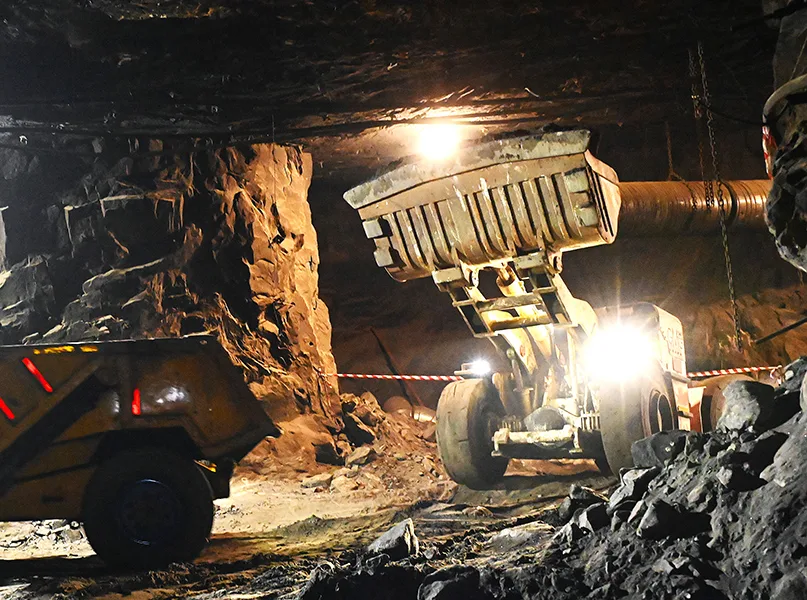
SUSTAINABLE AND INCORRUPTIBLE
Bauba is committed to a robust corporate governance structure that extends beyond mere regulatory compliance.
“This embodies our core values of safety, performance, agility, integrity, and respect,” Knowlden sets out.
As such, the company’s values are not only the foundation of its operations but also integral to the ethical code of conduct expected of its personnel, directors, and contractors.
“This code is fundamental in cultivating a culture of integrity, which has been instrumental in driving our ongoing success and growth,” he prides.
In terms of Bauba’s sustainable practices, its strategy is grounded in a commitment to ethical employment practices that advocate for human rights, employee training, and workplace health and safety.
“We uphold anti-corruption initiatives, respect for property rights, and sustainability throughout our supply chain,” Knowlden outlines.
The company’s anti-corruption initiatives come in the form of a whistleblowing policy that provides the necessary channels to report unsafe, unethical, or unlawful conduct.
This initiative is managed by an independent third party and provides a safe and confidential way for employees to report such conduct.
As such, Bauba’s dedication to upholding SA’s constitution and Bill of Rights is evident through its code of ethics.
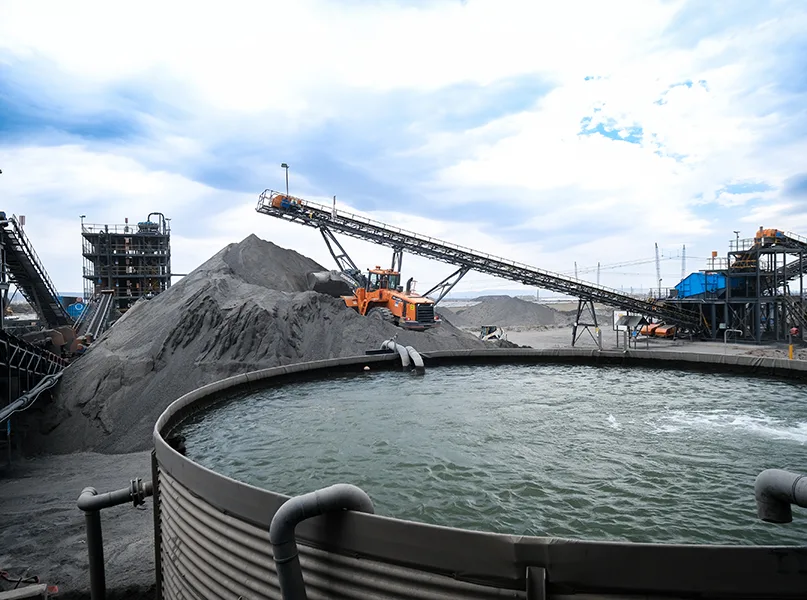
CULTIVATING MEANINGFUL RELATIONSHIPS AND INVESTING IN COMMUNITIES
In terms of corporate social responsibility (CSR), Bauba recognises the importance of giving back to the communities in which it operates, and prides itself on bolstering local businesses by forming partnerships with small and black-owned enterprises.
This is demonstrated through Bauba’s focus on prioritising implementation of its commitments in terms of the Social and Labour Plan (SLP), applicable to each of its projects, and several of the company’s impactful initiatives which focus on key areas including education, leadership development, sustainable projects, health awareness, and stakeholder engagement.
As part of Bauba’s stakeholder engagement plans, which seek to cultivate meaningful relationships with local people, community-based liaison officers are often deployed to provide residents of the area with information and updates about the company’s activities and new developments.
“We’re not only fostering ethical governance but also making a meaningful impact to the communities we serve,” Knowlden informs.
As such, Bauba continues to invest in projects that benefit the entire community rather than just individuals.
Moreover, the company believes in the importance of providing sustainable social development projects related to its mining and exploration activities as well as platforms for open dialogue with local residents.
“A sound grasp of the community’s needs and concerns enables us to respond appropriately,” he asserts.
Projects that Bauba has invested in over 2024, benefitting the community and totalling around ZAR4.8 million, include:
- Upgrading the Lefaragathle pump station to supply running water to the Lefaragathle Village.
- Supporting local farmers by supplying a water point and water for their cattle through erected water tanks, windmills, water troughs, a crusher pen, and kraals, as well as fencing the area.
- A bee-keeping project was successfully established with 10 community members from Phokeng, including an appointed business coach who is also from the community. This project will produce honey during the peak spring season for the boutique market and beauty and skin care products during the winter season. One year has been completed, with a second about to commence.
- IT equipment such as laptops, projectors, whiteboards, furniture, and Clearview perimeter fencing of approximately two km around both Lefaragathle and Bobuantswa Primary schools have been donated to the local community.
Further, Bauba recognises that those with disabilities can often face significant barriers to employment in SA due to social misconception. Last year, 7.5 percent of South Africans were reportedly living with disabilities, yet only one percent of them were employed.
With a deep belief in the prospective of every individual, the company is empowering potential employees through ‘learnerships’ to bridge the gap between finishing school and finding meaningful employment for disabled young people.
Through the learnership initiative, the company recently sponsored 12 learners with disabilities who are now enrolled in a one-year Generic Management National Qualifications Framework (NQF) Level 4 training programme.
Six of the learners will be supported by the Moeijelijk mine and an additional six by Kookfontein, each earning an accredited qualification and gaining invaluable work experience. By engaging closely with its stakeholders, Bauba continues to demonstrate its core values and commitment to diversity, inclusivity, and accessibility in the workforce.
In addition to the above, through the SLP, Bauba has supported local community members with:
- Seven bursaries, which are in progress.
- Portable skills training for 264 community members, which includes welding, paving, entrepreneurship, computer literacy, first aid, and mining equipment operators.
- 134 local community members receiving adult education training (AET).
- 21 learnerships in diesel mechanics, electronics, and boiler making.
- 13 internships in a range of fields, including mining engineering, metallurgy, mechanical engineering, geology, safety, occupational health, and finance.
- 26 mentorships whereby Bauba interns and employees are mentored by qualified advisors.
- Enterprise and supplier development of two local companies and two suppliers over a 12-month period in a training and mentorship programme.
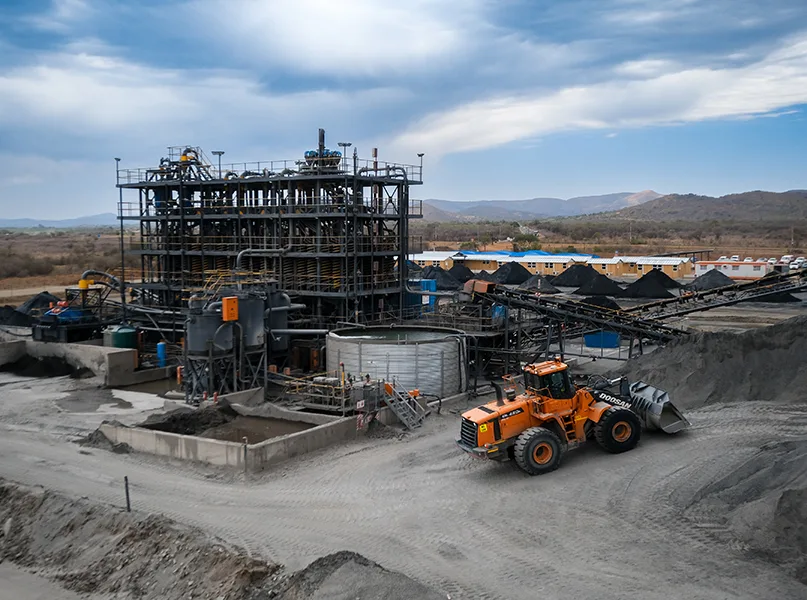
INVESTING IN COMMUNITIES
Elsewhere, as part of its corporate social investment (CSI) efforts, Bauba recently donated 460 school bags to Grade 1 learners across its two mining communities.
Students from Matianyane and Mogale primary schools around the Moeijelijk mine received school bags, as did learners from Buanja, Lefaragatlhe, Kgale, Tumagole, and Matlhware primary schools around the Kookfontein mine.
In addition, Bauba collaborated with local company, Ofitlhile Maintenance and Engineering (Ofitlhile), on an initiative that facilitated the donation of school shoes across local mining communities, with regional councillors providing the company with lists of beneficiaries to reach those in need.
In collaboration with Ofitlhile’s Managing Director, Collen Mokotedi, 60 children from Lefaragatlhe and Saron primary schools were gifted new shoes, providing more than just footwear to underprivileged children, but highlighting the critical work that must be undertaken to address the needs of young learners.
Bauba realises that developing children in its local communities is of utmost importance and has donated various school resources as well as sponsored 31 teachers to attend early childhood development (ECD) training.
Going forwards, Bauba will continue to prioritise community and social outreach work within its available resources and expand on the initiatives aimed at developing the mining communities as it strives to continue to inspire positive change.
LOOKING TO THE FUTURE
In terms of its operational aspirations, Bauba’s executives and management team, who have extensive mining and exploration knowledge and possess the technical and functional skills necessary to manage such projects, continue to grow the company by identifying and developing further mining opportunities.
“We have been targeting opencast chrome ore projects and resources for years,” Knowlden acknowledges.
With most of the opencast chrome ore resources in SA being recently depleted, the industry has witnessed chrome miners being pushed towards underground mining, which is more costly and capital intensive and expected to continue in coming years.
“Our business will therefore be positively positioned on the cost curve since we are a predominately opencast mining company,” he divulges.
Bauba has also been targeting resources that will provide commodity diversification from chrome and generate co-product revenue from PGMs. Both Naboom and Kookfontein have high in-situ PGM grades, with the former’s in-situ grade being 1.99g/t 4E.
“PGM prices are currently low but are bound to recover. When they do, we will benefit from this,” Knowlden confidently concludes.





































